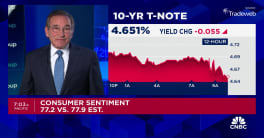The advance U.S. GDP report came in lower than expected for the second quarter of 2008, rising by 1.9% against expectations of 2.3% growth, according to the Bureau of Economic Analysis on Thursday. Revisions showed the U.S. economy shrank 0.2% in the fourth quarter 2007.
The negative figure is the first decline in quarterly growth since Q3 2001.
Revisions also showed the first quarter grew at 0.9%, down one-tenth from a previously reported 1.0% growth.
Prior to the release, forecasts were abnormally varied for the Q2 report, ranging from 0.9% to 4.2%.
The increase in real Q2 GDP reflected positive contributions from exports, personal consumption expenditures (PCE), nonresidential structures, federal government spending, and state and local government spending.
Negative contributions included private inventory investment, residential fixed investment, and equipment and software. Imports, which are calculated as a subtraction to GDP, decreased.
The price index for GDP, which measures prices paid by U.S. residents, rose 4.2% in the quarter, compared with an increase of 3.5% in the first quarter.
Excluding food and energy prices, the price index for gross domestic purchases advanced 2.2% in the second quarter, the same as in Q1.
Real personal consumption expenditures increased 1.5% in the quarter, compared with an increase of 0.9% in the first. Durable goods decreased 3.0%, following a decrease of 4.3% in Q1, while nondurable goods increased 4.0%, in contrast to a decrease of 0.4% in Q1.
Services posted a 1.1% gain, compared with an increase of 2.4% in the prior quarter.
Real exports of goods and services continued to grow significantly with a 9.2% in Q2, compared with a 5.1% in Q1. Real imports of goods and services decreased 6.6%, compared with a decrease of 0.8% in Q1.
Real federal government consumption expenditures and gross investment increased 6.7% in Q2, following a 5.8% in Q1. This included a 7.3% advance in national defense spending, the same increase as Q1. Nondefense spending increased 5.3%, following an increase of 2.9% in Q1.
Real state and local government consumption expenditures and gross investment increased 1.6% in contrast to a decrease of 0.3% in Q1.
Real nonresidential fixed investment increased 2.3% in the second quarter, compared with an increase of 2.4% in the first. Nonresidential structures advanced 14.4%, compared with an increase of 8.6%. Equipment and software fell 3.4%, bouncing from a decrease of 0.6%, while real residential fixed investment decreased 15.6%, a slower decline from Q1's 25.1% decline.
The report includes revisions to the prior three years of data. For 2004-2007, real GDP grew at an average annual rate of 2.6%, one-tenth less than in the previously published estimates.
Real gross domestic product is the output of goods and services produced by labour and property located in the United States. The 1.9% growth represents growth from the first quarter to the second quarter, according the advance estimates. The second quarter "preliminary" estimates, based on more comprehensive data, will be released on Aug. 28, 2008.
By Patrick McGee and edited by Nancy Girgis







